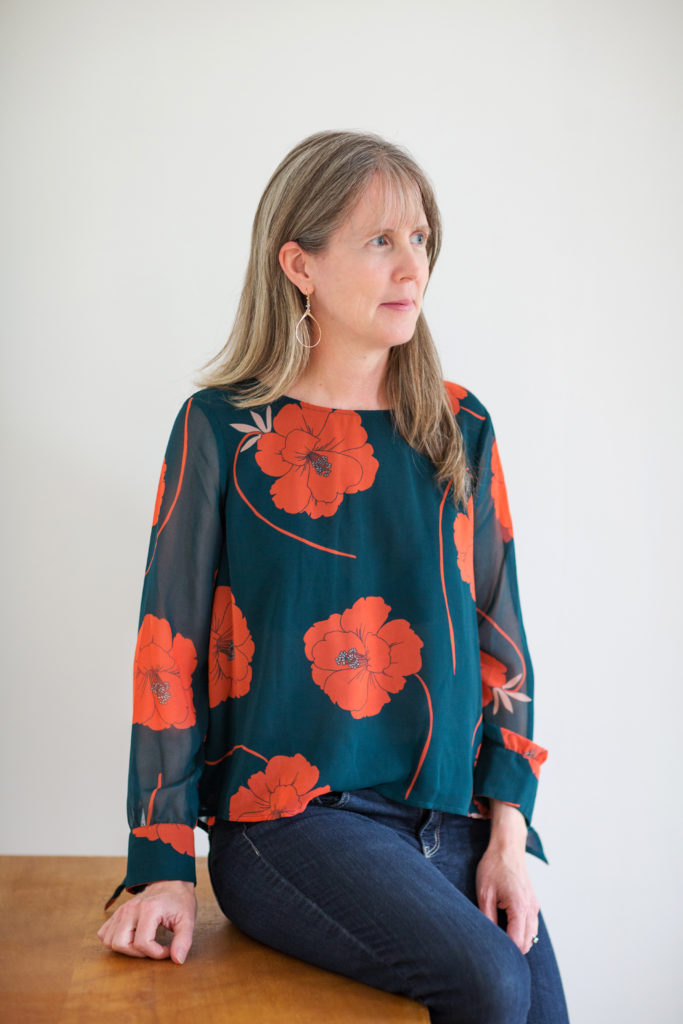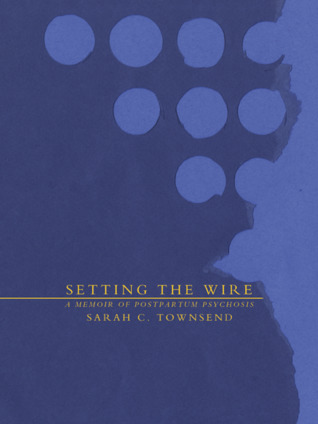“The first thing I must tell you is that with psychosis there is no I,” writes Sarah Townsend in the opening pages of her brave debut, Setting the Wire, A Memoir of Postpartum Psychosis.

This sentence rang in my ears all the way until the ending of the book to remind me of the author’s selfless attempt to narrate the story that had no beginning, middle, or end; the story that seemed impossible to be approached as a series of events that made any sense even when (re)investigated with temporal distance. “With psychosis, there is no I.”
“In a memoir, one event follows another,” writes Mary Karr in The Art of Memoir.
Sarah Townsend questions the norm. As understood based on the publisher’s description, Setting the Wire is a meditation on containment: of what we hold and what holds us together.”
Karr writes, “The books are held together by happenstance, theme, and (most powerfully) the sheer, convincing poetry of a single person trying to make sense of the past.”
I find this sentence helpful when trying to write about Townsend’s work. Setting the Wire is the poetry of a mother trying to make sense of a mental illness that overshadowed and crushed her joyous experience of giving birth.
“One function of this writing is the inoculation of feared memories: a kind of homeopathic remedy. I tell you this now so I can let go of the fear. The fear and the shame,” writes Townsend.
The fear and shame are what we hold onto the longest. The fear and the shame are culpable of talking writers out of writing their stories.
It took Sarah Townsend years to fully recover from the postpartum psychosis, and years to write (“I have written to the edge of my ambivalence.”) this heartfelt book that speaks to everyone.
To write about postpartum psychosis, Sarah Townsend had set the tightrope similar to one Phillippe Petit had set between World Trade Center towers. In her mind, she replayed the footage of Petit’s 1974 wire walk, “awed by his beauty, its magnitude, and impermanence.”
“My response intensifies each time I remember that the structures he walks between no longer exist,” writes Townsend.
As I read this, I go back to thinking of the actual act of writing a memoir. We are looking at past events, at structures that no longer exist, trying to (re)write them into a (new) existence.
Sarah Townsend plays with language like a painter plays with color. Her scenes, though fragmented, are as vivid as live footage. Her book, seemingly a collage, is, in fact, a live-streamed reportage of her experience. While reading Setting the Wire, I could see Sarah wandering the hallways of the psychiatric ward enveloped in fog. I could hear the plea of her heart while she was begging for an explanation. I could feel the coolness of the hospital bed, the itchy texture of the medical gown. I feared the void she had feared — the void created in the absence of self and the child and coherence.
I can’t help but read a few books interchangeably. Reading and writing, for me, is always a conversation. Last month I put five books in conversation with my own writing: Sarah Townsend’s Setting the Wire, Mary Karr’s The Art of Memoir, Terry Tempest William’s When Women Were Birds, Jennifer Pastiloff’s On Being Human, and Shobha Rao’s Girls Burn Brighter. Interestingly, all these books spoke to me about voice. And voice was what I wrote about – the inner voice, the artistic voice accessible only through (re)connecting to silence.
“The goal of a voice is to speak not with objective authority but with subjective curiosity,” writes Karr.
And this is precisely what Townsend did in Setting the Wire. “With psychosis, there is no I,” she said in the beginning, and she made it through the end of the book holding onto her idiosyncratic curiosity.
Memoir always explores survival. In most of the memoirs I’ve read, the author, at one point, comes to an understanding of how they survived, what kept them together. Setting the Wire does not look at past events with any degree of certainty and does not give us firm answers. As readers, we are not just the observers of postpartum psychosis, we are sucked inside of it. We are there, in the spiral. In Townsend’s mesmerizing collage of fragmented memories that flash back to her childhood and forward to her present, we are offered images, ideas, sounds, definitions, thoughts, sensations, and we are too trying to make sense of it. We are embracing Townsend’s voice and employing our subjective curiosity.
Sarah Townsend’s Setting the Wire is a mother’s triumph over the unthinkable and a writer’s triumph over the form and the norms. But, most importantly, Setting the Wire acts as a witness to the female awakening. Sarah Townsend did not write about postpartum psychosis; she wrote from the inside of it. She wrote to understand, but what happened, in the end, is that she wrote to save, once again – herself and her family, and then, the other women and families affected by the obscure, still uncharted illness.
“When one woman doesn’t speak, other women get hurt,” writes Terry Tempest Williams in When Women Were Birds. This knowing makes Townsend’s voice the voice of a liberator, a healer, a poet-savior.

2019 | 136 pp | 978-1-7335499-0-5
Setting the Wire is a memoir of postpartum psychosis and a meditation on containment: of what we hold and what holds us together. A lyric exploration of motherhood, mental illness, and familial ties, Sarah Townsend weaves together personal anecdote, film, music, visual art, and psychology. Setting the Wire is a visceral reflection on the experience of fragmentation as a young psychotherapist and new mother.
Sarah Townsend’s essays have appeared in The Writer in the World and Pitkin Review. A co-authored paper with Elisabeth Young-Bruehl serves as a chapter in Subject to Biography: Psychoanalysis, Feminism, and Writing Women’s Lives. Sarah received her MFA in creative writing from Goddard College, her Master’s in counseling psychology from Northwestern University, and is a graduate of the College of Letters at Wesleyan University. She writes, teaches, and practices psychotherapy in and around Seattle, WA. You can learn more about her at www.SarahTownsendWriter. com.